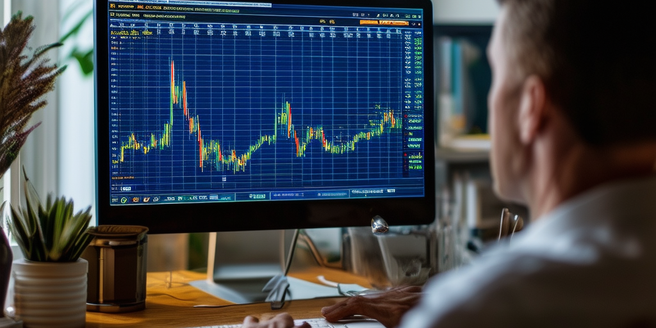Understanding What ETFs Are
Exchange Traded Funds (ETFs) are investment funds that are traded on stock exchanges, much like individual stocks. They offer a practical solution for investors looking to diversify their portfolios. They are designed to track the performance of a specific index, sector, commodity, or asset class. As a result, they can greatly reduce investor risk by spreading investments across many different areas. They offer a way for investors to buy a diverse collection of securities, such as stocks, bonds, or commodities, in a single transaction. ETFs are unique in that they provide the diversification of a mutual fund, yet still retain the ability to be bought and sold throughout the trading day at market prices, similar to individual stocks.
The Importance of Diversifying Your Portfolio
Diversification in investment is a risk management strategy that involves spreading investments across various assets to reduce exposure to any one particular asset. It is a method often suggested by financial advisors to mitigate potential losses. With this approach, you are not putting all your eggs in one basket; instead, you are distributing your investments across a wider board. Investing in ETFs allows you to diversify your portfolio because ETFs often track a broad market index. Owning an ETF that tracks a specific index is akin to owning a tiny piece of the entire index. As a result, any single stock’s performance, good or bad, is unlikely to drastically affect your total investment.
How to Choose the Right ETF for You
Choosing the right ETF (Exchange-Traded Fund) begins with a clear understanding of your investment goals: growth, income, a guard against inflation, or a mix of these. You should then investigate the ETF’s underlying assets, whether stocks, bonds, commodities, or a mix, as these directly impact its performance. Reviewing the ETF’s performance history will help you get a handle on its track record and indicate what you can expect.
You also need to be aware of the costs involved; the expense ratio, which is the annual fee ETFs charge their shareholders, could potentially decrease your returns. A thorough assessment of the ETF’s fact sheet or prospectus will also provide further vital information, including investment strategy and risk profile.
While the past performance of the ETF can provide some indication of potential, it does not guarantee future results. It’s important to remember that all investments carry risks and not to let impressive past returns influence your decision unduly.
Understanding Fees and Charges When Investing in ETFs
The expense ratio is typically the primary fee associated with owning ETFs. This annual fee, expressed as a percentage of your investment, covers management, administration, and operational costs. It is usually deducted directly from the fund’s assets, thus reducing the overall return. Be aware that this fee can vary significantly between different ETFs, potentially impacting your overall returns and investment strategy. Other costs, such as transactional costs related to buying and selling on the market, also exist. However, in addition to the expense ratio, some ETFs may have other fees, such as purchase or redemption fees. Furthermore, since ETFs trade like stocks, you may have to pay a commission to buy or sell shares. Thus, it’s crucial to understand all the associated cost before investing.
Steps to Start Investing in ETFs
After understanding what ETFs are, the importance of diversification, finding the right ETF for you, and knowing the fees, the next step is execution. During this stage, it’s crucial to do a thorough research on different online brokers before settling on one. Find a reliable online broker that suits your needs and open an account, then decide how much to invest, keeping in mind your risk tolerance and investment goals. Don’t forget to take into account any potential tax implications of investing in ETFs. Armed with this information, you’ll be able to make a well-informed decision. Select your preferred ETF and place a buy order. Finally, remember to monitor your investment and adjust as necessary.


